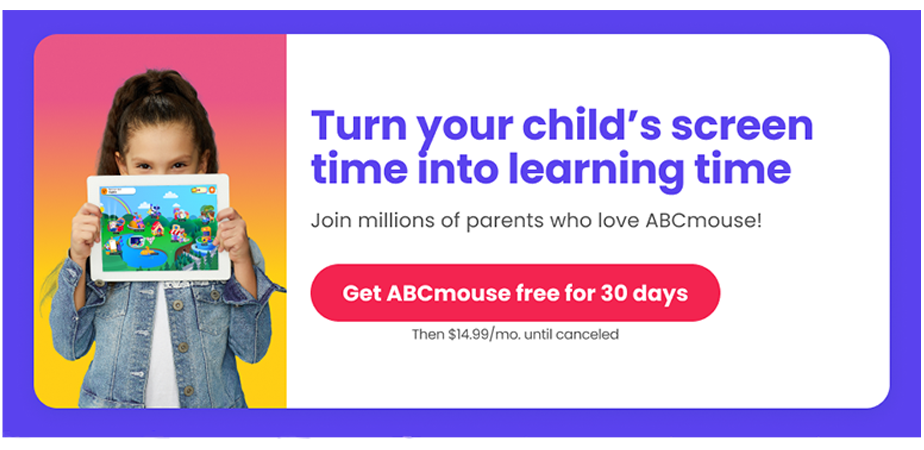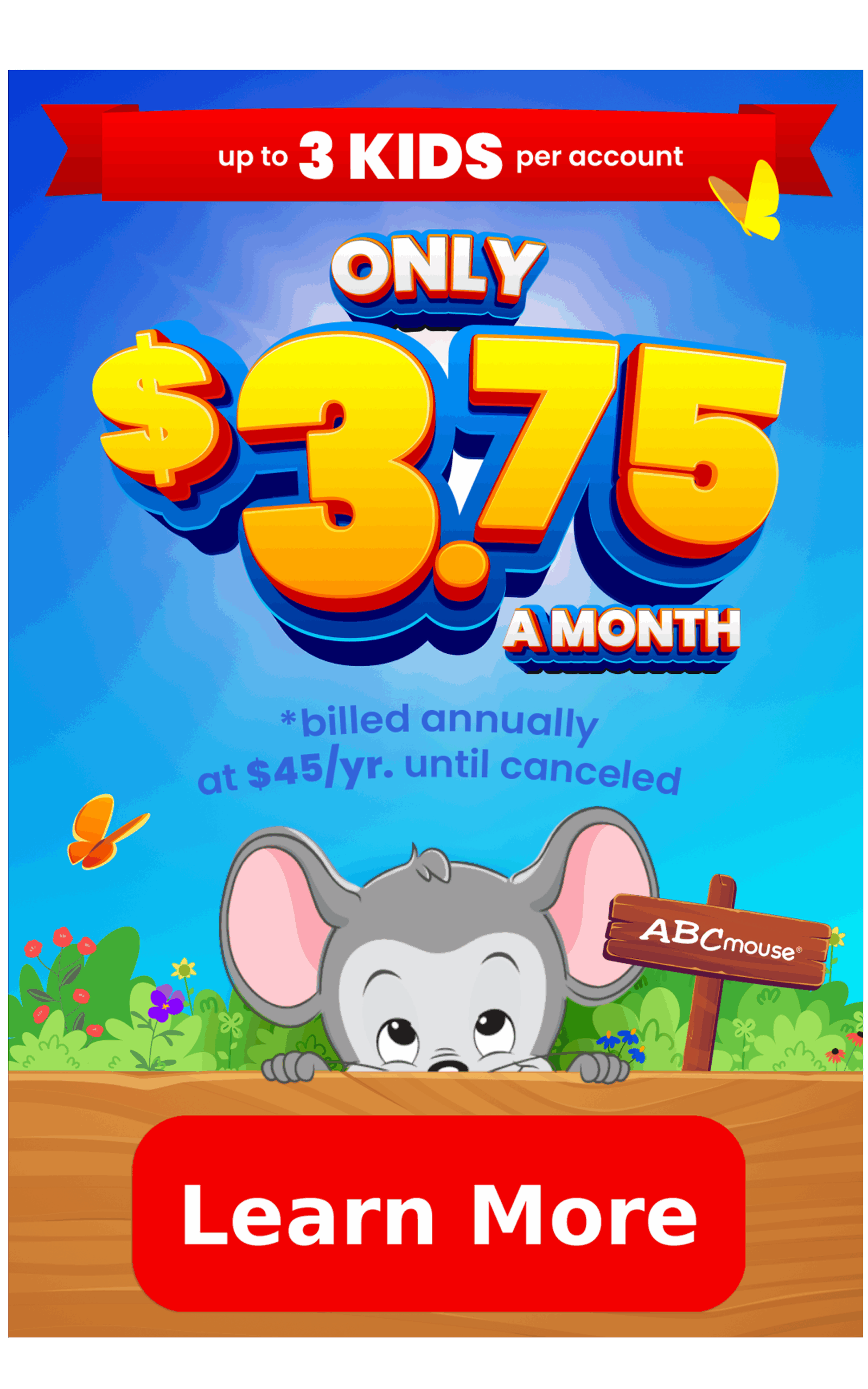
Share
15+ Cooperative Play Activities for Your Home or Classroom
Encourage this important stage of play with these fun and simple activities for indoors and out!
Table of Contents–Jump to Each Section
Cooperative play is an important part of early childhood development. It teaches kids how to work together, share ideas, and solve problems as a team, helping them build strong social-emotional skills that support learning and friendship.
Cooperative Play Explained:
- Cooperative play happens when kids work together toward a shared goal (like building something, playing a game, or acting out a story.)
- Cooperative play is a more organized and interactive way to play that helps children learn how to collaborate, solve problems, and connect with others.
- Around age 4 or 5, children start moving from solo or side-by-side play to more social, team-based activities that can naturally develop into cooperative play.
- In cooperative play, kids talk things through, make rules, assign roles, and share materials.
Learn more about cooperative play and the other 5 stages of play in early childhood.
Here are 15+ fun and easy cooperative play activities that are perfect for home or the classroom—designed to encourage connection, teamwork, and a whole lot of fun.
Cooperative Play Ideas for Children
Many of these ideas are classic kids’ activities, but they also provide excellent opportunities for cooperative play to erupt naturally.
Indoor Cooperative Play Activities:
Puppet Show:
Whether you make your own finger puppets and create a “theater” from a cardboard box or have a more elaborate setup, it definitely takes teamwork to create and put on a show!
Cooperative Board Games:
Look for games where players win or lose together, the game is the opponent, players collaborate toward a common goal, and/or play requires communication and collaboration. You can find a few cooperative board game ideas here.
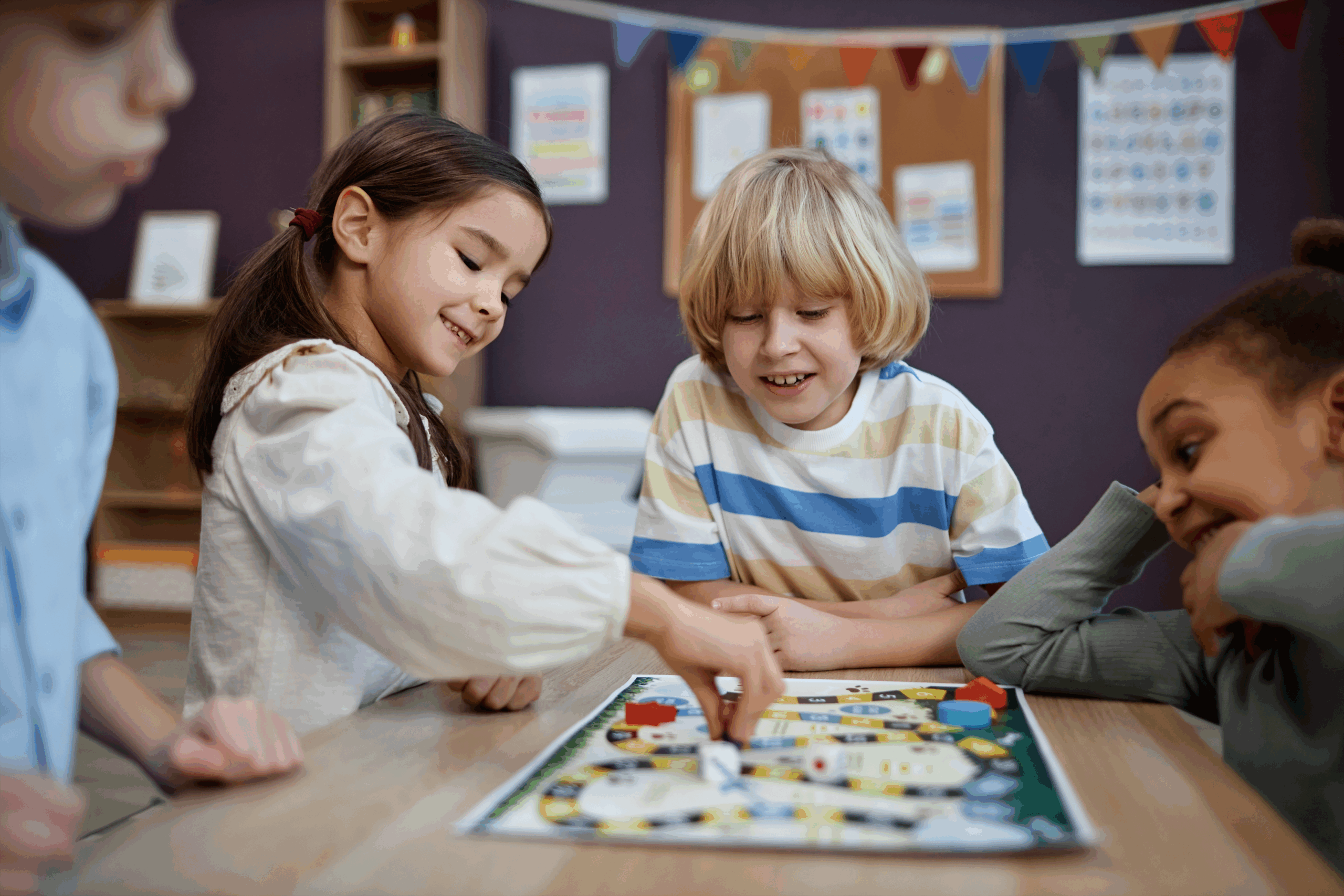
Pretend Restaurant or Store:
These classic pretend games, along with House, School, and others, let kids try out future adult responsibilities and careers while enjoying cooperative play. Provide materials like dress-up clothes, toy food and kitchen utensils, or other vocational toys to encourage this sort of cooperative play for preschoolers.
Jigsaw Puzzles:
Putting together a puzzle can definitely be a group endeavor. Assign various sections to different people, and be sure to use a big space where everyone has room to work on their section comfortably.
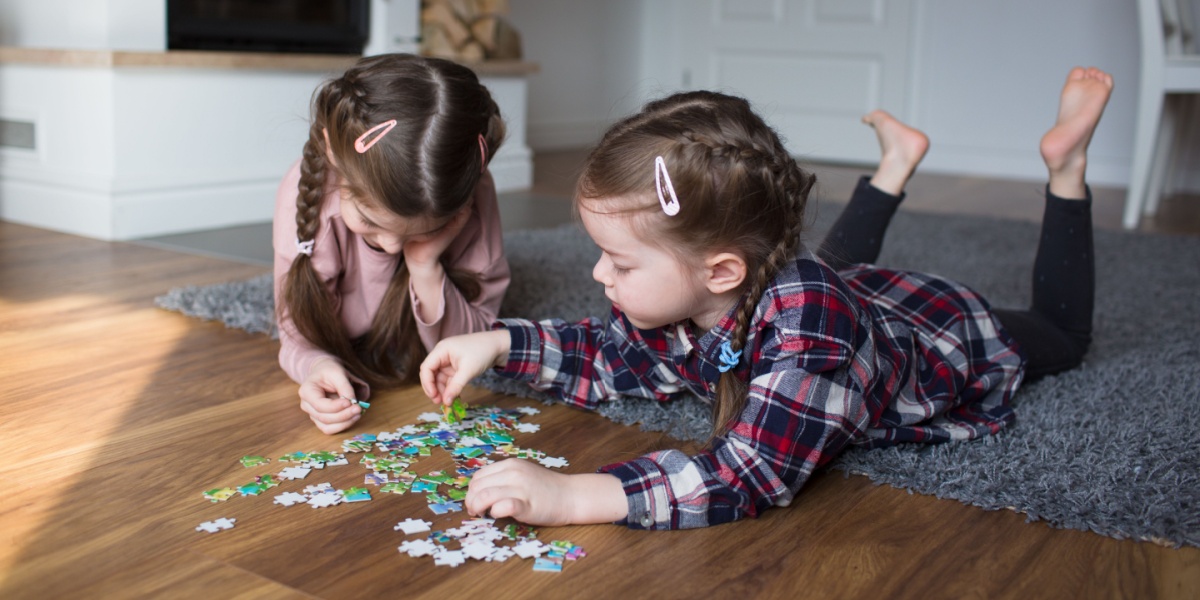
Blanket Fort:
Here’s another childhood classic. Kids can build a fort alone, but it’s a lot more fun when you collaborate. As they plan, gather materials, and then construct, they’ll need to navigate conflicts and solve problems along the way. When they’re done, they can use their fort for more cooperative play!
Outdoor Cooperative Play Activities:
DIY Obstacle Course:
Making a plan, gathering materials, choosing people to work on different sections—these are all collaborative tasks that culminate in an obstacle course kids can be proud of together.
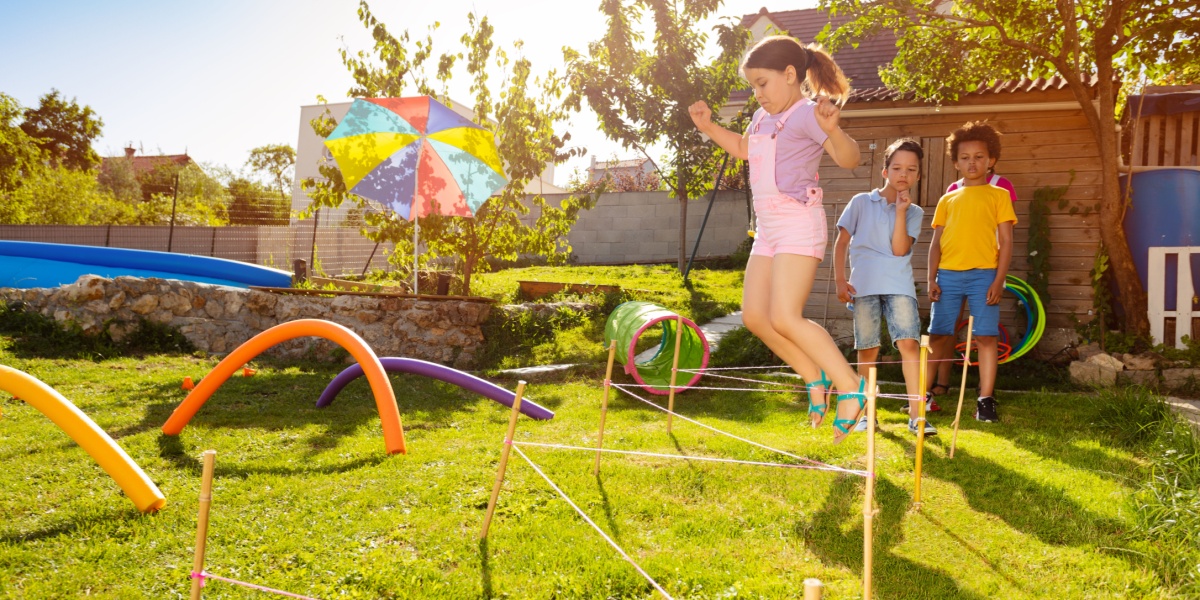
Build a Playhouse:
Whether kids construct their house from temporary materials like outlining rooms with sticks and making furniture from rocks, or actually gather building materials and piece together something more permanent, this is the kind of group project with a role for everyone who wants to join.
Tag Variations:
Games with a competitive slant can still be cooperative. Kids must decide on the rules together, then follow them and keep each other honest as they play.
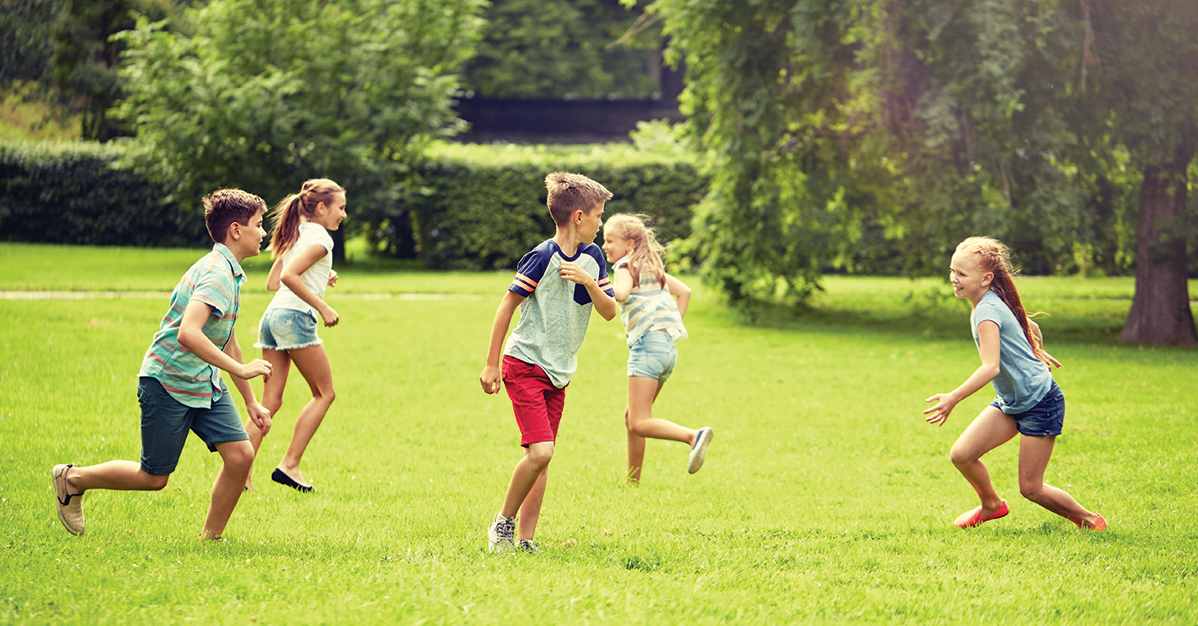
There are endless tag variations for kids to try, like Freeze Tag, Shadow Tag, Blob Tag, and Sharks & Minnows. Or, encourage kids to collaborate and come up with their own rules!
TIP: Our free printable Backyard Games for Kids features several tag variations kids can try.
Relay Races:
Divide a larger group of kids into smaller teams, then set a goal for each team to complete together. Try the classic relay where one player runs down and back, then tags the next runner. Or, get creative with a pop-the-balloon race, egg-and-spoon race, or pass-the-water race.
Gardening:
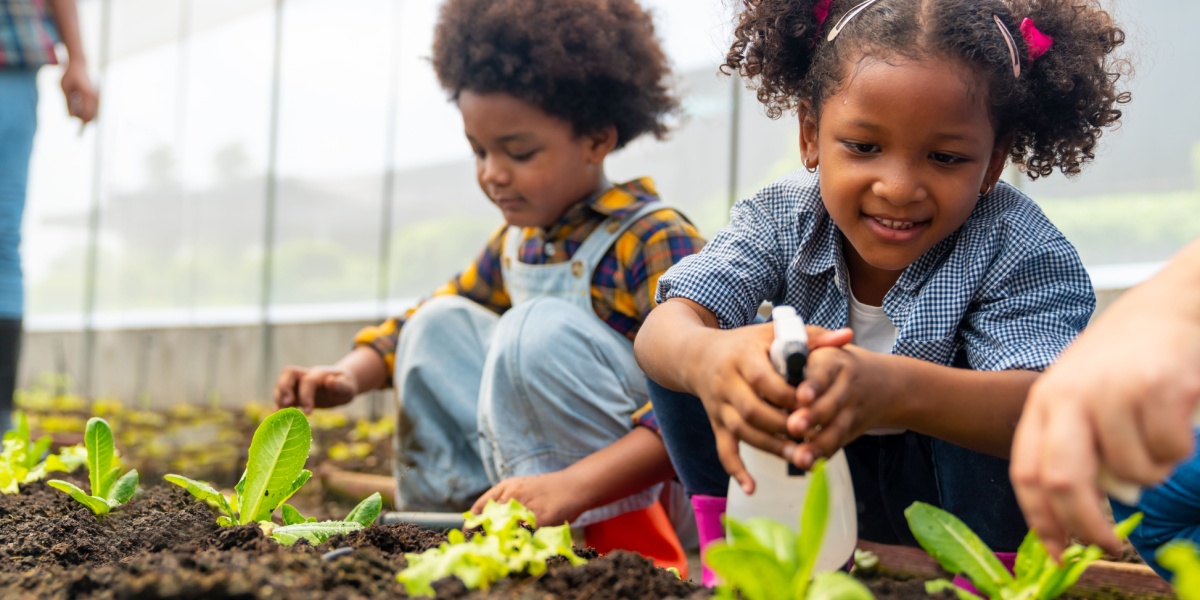
Give kids child-sized shovels, rakes, and other gardening tools and a patch of bare ground. They can make a “pretend” garden by planting pebbles and then sticking flowers into the ground to simulate a growing garden. Or, make the activity more meaningful by showing them how to plant real seeds and tend an actual garden!
Small Group Projects for Cooperative Play:
Joint Art Project:
Unleash everyone’s creativity with a big collaborative project like a wall mural or mosaic. Let kids lead, generating the design, choosing the materials, assigning jobs, and ultimately creating the finished work of art.
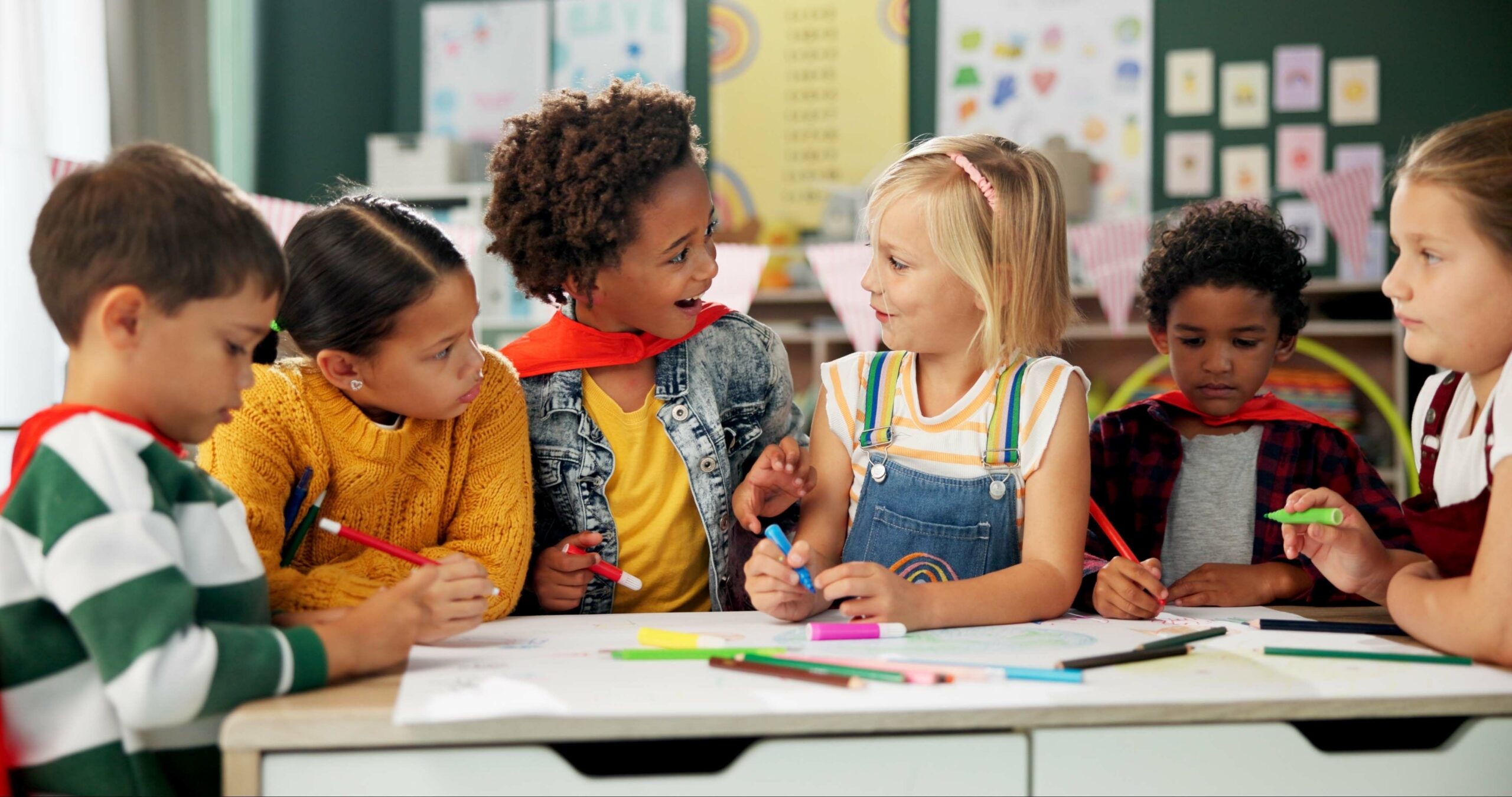
STEM Challenge:
These challenges require kids to work together to solve a problem. For instance, ask them to use aluminum foil to make a boat that floats and also holds 15 pennies. Or, given some newspaper and masking tape, how tall of a tower can they build?
TIP: Check our our 90+ STEM Activities for Kids to get more STEM-related projects that inspire cooperative play.
Collaborative Book:

This is a cooperative project that allows kids to lean on their strengths. One child might write the story, another could illustrate it, while a third figures out how to use paper, yarn, and a hole punch to turn it into an actual book.
Cardboard City:
Provide a giant stack of cardboard boxes and some rolls of masking tape, and you’ll be amazed at what a group of kids playing cooperatively can come up with!
Group Dance Routine:

Choose a song everyone loves, then work out a group routine. Perform it for friends and family, or even at your next school talent show!
Tips to Encourage Cooperative Play at Home or in the Classroom
As children get older, most naturally begin to play cooperatively, given the chance. It’s up to parents and teachers to provide those opportunities, then offer guidance and encouragement as needed. Try these ideas and tips to encourage cooperative play.
1. Provide Materials That Naturally Promote Group Effort
Some toys and games are automatically more fun with several players. Cooperative board games, puppet theaters, imaginative play scenarios like dress-up clothes or play kitchens, and relay races are all excellent ways to encourage cooperative play.
2. Model Cooperative Behavior
Children learn from watching adults and older peers, so set a good example. Use collaborative language and invite children to join you in cooperative activities or games. Show them what it looks like to take turns and listen actively, and model good conflict resolution skills when disagreements pop up.
Examples:
“Ashby and Logan, do you want to help me build a blanket fort? I’ll get the pillows and blankets, and you can talk about what it should look like.”
“Logan, I like your idea to add a space just for reading! Ashby, what do you think should go in that space?”
“Okay, you each want to sit in the new reading nook, but it’s not really big enough for both of you. Should we take turns, or try to make it big enough for more people?”
3. Give Children Shared Goals or Roles
When you notice children playing associatively (near each other but without a common goal), nudge them into cooperative play by suggesting ways they can play together. You can also invite onlookers to join in the fun.
Examples:
“You three are doing a terrific job of sharing these LEGOs! What if you worked together to build something, like a town or a big castle?”
“Your restaurant seems to be a hit! Why don’t you ask Jose to come join in and be your next customer?”
“It seems like everyone wants to use the playhouse today. What game could you all play together?”
4. Praise Cooperation and Kindness
Recognize and reward cooperative play behaviors to let kids know they’re on the right track. It means a lot to know that someone saw you give up your turn so someone new could join the game, or that you consoled a fellow player when something went wrong. Praise children often in meaningful ways, and they’ll make an effort to continue those behaviors.
Examples:
“You all are doing an amazing job of building this giant sandcastle together! You’re really listening to each other and coming up with creative ways to incorporate everyone’s ideas!”
“It was really kind of you to let Liam join the game, even though you had to change the rules a bit. He really wanted to play and was so happy to join in.”
“Way to go! That box is really heavy, but you worked together to move it where you wanted it!”
5. Navigate Disagreements During Group Play
Conflict means big emotions for everyone, including the adults monitoring the play. Be sure to approach a conflict calmly, stating what you observe and naming the emotions you see. Invite everyone to share their side, validating different points of view. Then, reframe the problem as a shared goal, and offer simple choices as solutions.
Examples:
“It looks like you’re having trouble deciding who should go first and you’re both very angry. Everybody wants to get the game started, so what’s a fair way to decide who should go first? You could flip a coin, or play rock-paper-scissors. Which one would you like to try?”
“Ana, you’re yelling and you look angry, and Jacob looks very sad. It seems like you both want to use the tricycle and can’t decide whose turn it is. One at a time, tell me how you’re feeling, and then we’ll find a way for everyone to have fun during recess.”
As kids get older, try not to step in and moderate conflicts immediately. Give them a few minutes to work things out, and remember that disagreement can be constructive in the right circumstances. When kids learn to navigate conflict resolutions on their own, they gain important skills they’ll need their entire lives.


